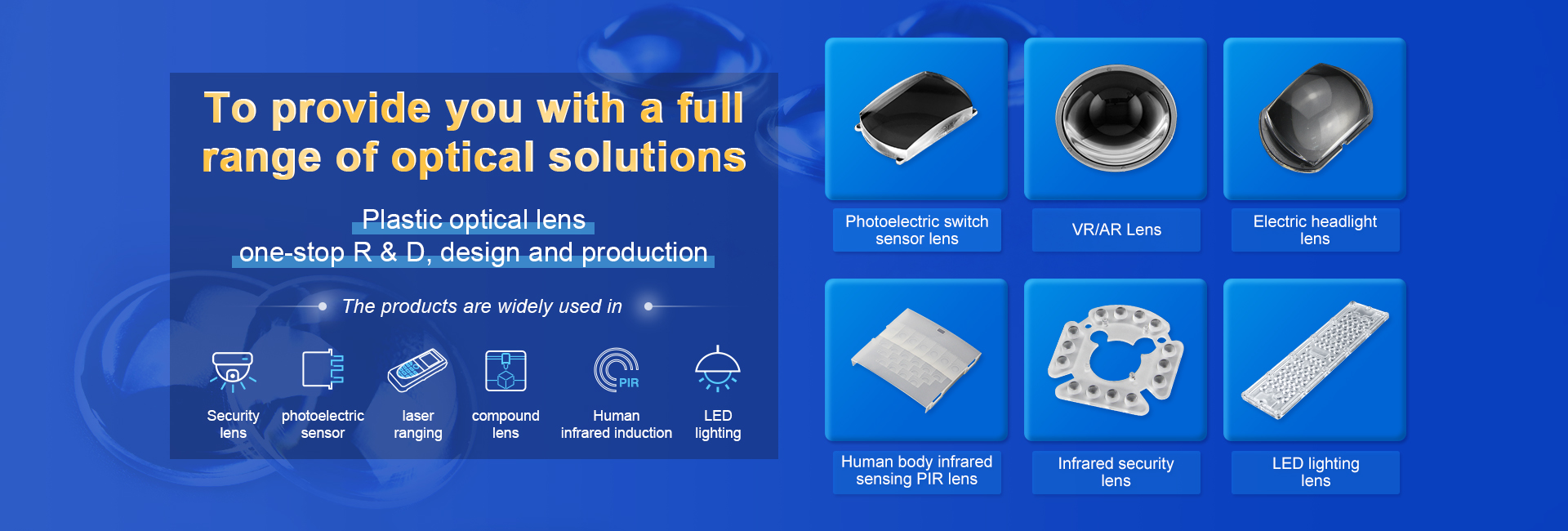Why does the LED lens lamp bead turn yellow after a long time
Time:2020-09-02 来源:Dongguan Lianlong Optoelectronic Technology Co.Ltd
In this 21st century, LED lighting is gradually replacing traditional lighting, and the widespread use of LED lenses is not news. In the process of widespread use, it is inevitable that the LED lens will have problems due to quality, human factors, physiological factors, etc., so as the LED lamp bead, the larger component of the LED lamp, its quality determines the LED to a large extent. The quality of the lamps. As far as LED lens manufacturers know, one of the common problems of LED lamp beads is that they are easy to turn black, and the coating of the LED bracket is silver-plated. Because the sulfur-containing gas will pass through the porous structure of the silica gel or the gap of the bracket, and cause a vulcanization reaction with the silver-plated layer of the light source, the plastic we use for the bracket has many porous structures.
Reason 1: LED lens lamp bead coating vulcanization discoloration
After the vulcanization reaction of the LED lens light source occurs, this means that the functional area of the lamp will be blackened, the luminous flux will gradually decrease, and the color temperature will drift significantly; the conductivity of the vulcanized silver sulfide increases with the temperature rise, and it is very easy to leak electricity during use. ; A more serious situation is that the silver layer is completely corroded and the copper layer is exposed.
Silver has a strong affinity for sulfur, oxygen, and chlorine. Silver easily adsorbs water molecules in the air to form a water film on its surface. Oxygen, sulfur, and chlorine in the air enter the water film to generate insoluble silver oxide, silver sulfide, and silver chloride, which corrode on the surface of the silver layer and cause discoloration.
Rough silver-plated surface is easier to condense water and enter corrosive medium than smooth, causing discoloration.
The surface is not clean after silver plating, and the remaining electroplating solution contains silver ions, which will quickly cause discoloration after contact with moist air.
Reason 2: Discoloration of LED lens lamp beads
The LED chip is glued to the holder (except for eutectic). LED lens manufacturers believe that everyone should know that the LED chip is a heat source, and all heat must be dissipated from here. And because the light emitted by the LED chip is not blue, the wavelength is short, and the energy is high, the molecular chain of the die-bonding glue is in a high-energy state for a long time. The die-bonding glue is the hottest substance outside the chip, and this is the reason why the die-bonding glue will change color.
Epoxy resins are easy to be carbonized at high temperature, and the molecular bonds are easily broken and yellowed due to long-term blue light irradiation. The silver in the silver glue is halogenated, vulcanized, and oxidized, resulting in a decrease in the thermal conductivity and bonding strength of the die-bonding glue.
Reason three: aging and discoloration of the packaging glue
Since the LED lamp beads need to be protected by transparent glue, the factors such as high refractive index and high projection rate are more important when choosing glue. Generally choose stupid silicone or epoxy glue. When these glues are exposed to light for a long time, the molecular bonds will be broken and changed.
Due to the presence of phenyl ring groups, phenyl silica gels will produce a color-changing group "quinone" under high temperature and ultraviolet conditions, which will cause yellowing. Epoxy materials are more prone to yellowing and cracking under high temperature and UV conditions.



